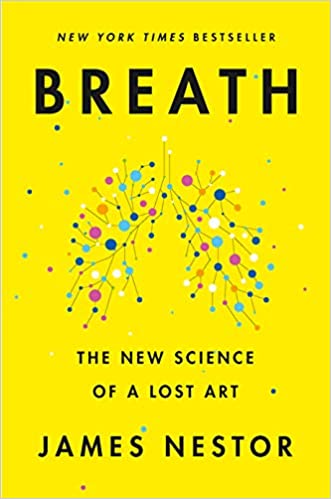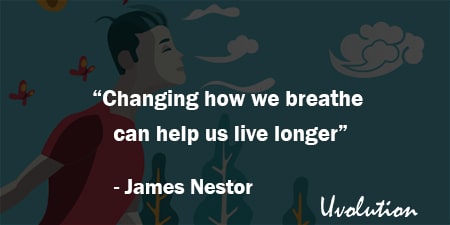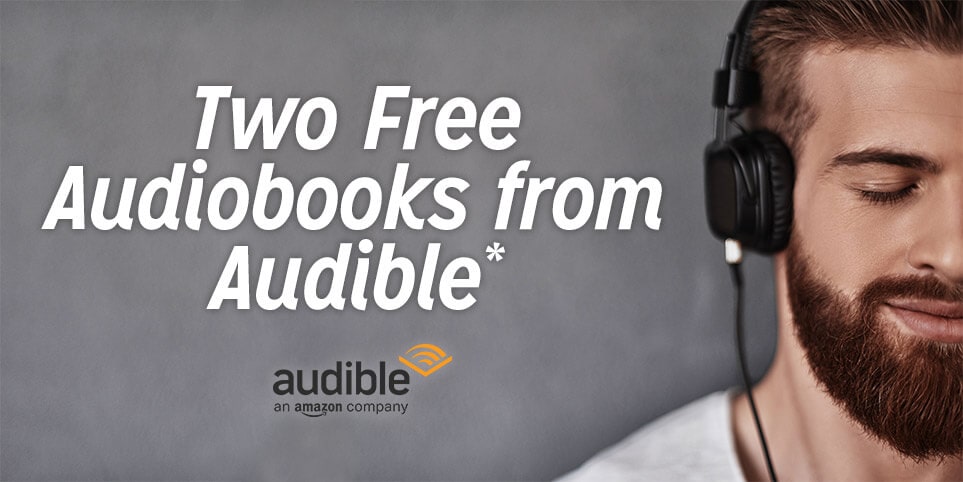Breath by James Nestor Summary
The Book in 1 Sentences
Breath: The New Science of a Lost Art
“Few of these scientists set out to study breathing. But, somehow, in some way, breathing kept finding them. They discovered that our capacity to breathe has changed through the long process of human evolution, and that the way we breathe has gotten markedly worse since the dawn of the Industrial Age.
They discovered that 90 percent of us—very likely me, you, and almost everyone you know—is breathing incorrectly and that this failure is either causing or aggravating a laundry list of chronic diseases.
On a more inspiring note, some of these researchers were also showing that many modern maladies—asthma, anxiety, attention deficit hyperactivity disorder, psoriasis, and more—could either be reduced or reversed simply by changing the way we inhale and exhale.
This work was upending long-held beliefs in Western medical science. Yes, breathing in different patterns really can influence our body weight and overall health. Yes, how we breathe really does affect the size and function of our lungs.
Yes, breathing allows us to hack into our own nervous system, control our immune response, and restore our health. Yes, changing how we breathe can help us live longer.
No matter what we eat, how much we exercise, how resilient our genes are, how skinny or young or wise we are—none of it will matter unless we’re breathing correctly. That’s what these researchers discovered. The missing pillar in health is breath. It all starts here.” ~ James Nestor
7 BIG Ideas
1. The Experiment: Mouthbreathing
3. What we need is more carbon dioxide!
Breath by James Nestor Book Summary
1. The Experiment: Mouthbreathing
“And here we are. Ninety percent of children have acquired some degree of deformity in
their mouths and noses. Forty-five percent of adults snore occasionally, and a quarter of
the population snores constantly.
Twenty-five percent of American adults over 30 choke on themselves because of sleep apnea; and an estimated 80 percent of moderate or severe cases are undiagnosed. Meanwhile, the majority of the population suffers from some form of breathing difficulty or resistance.
We’ve found ways to clean up our cities and to kill off so many of the diseases that destroyed
our ancestors. We’ve become more literate, taller, and stronger. On average, we live three times longer than people in the Industrial Age.
There are now seven and a half billion humans on the planet—a thousand times more people than there were 10,000 years ago. And yet we’ve lost touch with our most basic and important biological function.”
The experiment: James and his friend Anders Olsson went to Stanford to have their noses 100% plugged to force them to breathe exclusively through their mouths for 10 days.
James says: “The major takeaway we already knew: mouthbreathing is terrible.” “The nagging fatigue, irritation, testiness, and anxiety. The horrid breath and constant bathroom breaks. The spaciness, stares, and stomachache. It was awful.”
2. Lung size and longevity!
“More recently, science has begun testing what the ancient Tibetans understood intuitively. In the 1980s, researchers with the Framingham Study, a 70-year longitudinal research program focused on heart disease, attempted to find out if lung size really did correlate to longevity.
They gathered two decades of data from 5,200 subjects, crunched the numbers, and discovered that the greatest indicator of life span wasn’t genetics, diet or the amount of daily exercise, as many had suspected. It was lung capacity.
The smaller and less efficient lungs became, the quicker subjects got sick and died. The cause of deterioration didn’t matter. Smaller meant shorter. But larger lungs equaled longer lives.
Our ability to breathe full breaths was, according to the researchers, ‘literally a measure of
living capacity.’”
3. What we need is more carbon dioxide!
“Every healthy cell in the body is fueled by oxygen, and this is how it’s delivered. The entire
cruise takes about a minute, and the overall numbers are staggering. Inside each of our 25
trillion red blood cells are 270 million hemoglobin, each of which has room for four oxygen
molecules.
That’s a billion molecules of oxygen boarding and disembarking within each red blood cell. There’s nothing controversial about this process of respiration and the role of carbon dioxide in gas exchange. It’s basic biochemistry. ...
‘Everyone always talks about oxygen,’ Olsson told me during our interview in Stockholm.
‘Whether we breathe thirty times or five times a minute, a healthy body will always have enough oxygen!’
What our bodies really want, what they require to function properly, isn’t faster or deeper
breaths. It’s not more air. What we need is more carbon dioxide.”
In The Oxygen Advantage where Patrick Mckeown says: “The crucial point to remember is that hemoglobin releases oxygen when in the presence of carbon dioxide.
When we overbreathe, too much carbon dioxide is washed from the lungs, blood, tissues, and cells. This condition is called hypocapnia, causing the hemoglobin to hold on to oxygen, resulting in reduced oxygen release and therefore reduced oxygen delivery to tissues and organs.
With less oxygen delivered to the muscles, they cannot work as effectively as we might like them to. As counterintuitive as it may seem, the urge to take bigger, deeper breaths when we hit the wall during exercise does not provide the muscles with more oxygen but effectively reduces oxygenation even further.
In contrast, when breathing volume remains nearer to correct levels, the pressure of carbon dioxide in the blood is higher, loosening the bond between hemoglobin and oxygen and facilitating the delivery of oxygen to the muscles and organs...
In light of the Bohr Effect, overbreathing limits the release of oxygen from the blood, and in turn affects how well our muscles are able to work.”
Patrick also says: “So how do we ensure that we breathe correctly so as to make optimal use of our amazing respiratory system? As odd as this may seem, it’s not oxygen that exerts the primary influence on your breathing efficiency, but carbon dioxide.”
4. Breathe less!
“One thing that every medical or freelance pulmonaut I’ve talked to over the past several years has agreed on is that, just as we’ve become a culture of overeaters, we’ve also become a culture of overbreathers.
Most of us breathe too much, and up to a quarter of the modern population suffers from more serious chronic overbreathing.
The fix is easy: breathe less. But that’s harder than it sounds. We’ve become conditioned to
breathe too much, just as we’ve been conditioned to eat too much. With some effort and training, however, breathing less can become an unconscious habit.
Indian yogis train themselves to decrease the amount of air they take in at rest, not increase
it. Tibetan Buddhists prescribed step-by-step instructions to reduce and calm breathing for
aspiring monks.
Chinese doctors two thousand years ago advised 13,500 breaths per day, which works out to nine and a half breaths per minute. They likely breathed less in those fewer breaths.
In Japan, legend has it that samurai would test a soldier’s readiness by placing a feather beneath his nostrils while he inhaled and exhaled. If the feather moved, the soldier would be dismissed.
To be clear, breathing less is not the same as breathing slowly. Average adults can hold about
four to six liters of air. Which means that, even if we practice slow breathing at 5.5 breaths per
minute, we could still easily be taking in twice as much air as we need.
The key to optimum breathing, and all the health, endurance, and longevity benefits that come
with it, is to practice fewer inhales and exhales in a smaller volume. To breathe, but to breathe less.”

GET Blinkist 7 Days FREE Trial
3000+ Book Summaries
(Audio and Text)
In The Oxygen Advantage where Patrick Mckeown also says: “Just as we have an optimal
quantity of water and food to consume each day, we also have an optimal quantity of air to
breathe. And just as eating too much can be damaging to our health, so can overbreathing.”
And he says: “Modern living gradually increases the amount of air we breathe, and while getting more oxygen into our lungs might seem like a good idea, it is in fact light breathing that is a testament to good health and fitness.
Think of an overweight tourist and an Olympian both arriving for the Summer Games. As they pick up their luggage and carried it up a flight of stairs, whom would you expect to be huffing and puffing? Certainly not the Olympian.
The biggest obstacle to your health and fitness is a rarely identified problem: chronic
overbreathing. We can breathe two to three times more air than required without knowing it.”
5. Slower, longer exhales
“Slower, longer exhales, of course, mean higher carbon dioxide levels. With that bonus carbon dioxide, we gain a higher aerobic endurance.
This measurement of highest oxygen consumption, called VO2 max, is the best gauge of cardiorespiratory fitness.
Training the body to breathe less actually increases VO2 max, which can not only boost athletic stamina but also help us live longer and healthier lives.”
6. Maintaining correct ‘oral posture.’
“[John] Mew’s son, Mike, who is also a dentist, joined the conversation. Mike was tanned, tall,
and lanky, with piercing brown eyes, dressed in fashion jeans and a tight-fitting sweater.
He explained that the first step to improving airway obstruction wasn’t orthodontics but instead involved maintaining correct ‘oral posture.’ Anyone could do this, and it was free.
It just meant holding the lips together, teeth lightly touching, with your tongue on the roof of
the mouth. Hold the head up perpendicular to the body and don’t kink the neck. When sitting
or standing, the spine should form a J-shape—perfectly straight until it reaches the small of
the back, where it naturally curves outward.
While maintaining this posture, we should always breathe slowly through the nose into the abdomen.
Our bodies and airways are designed to work best in this posture, both Mews agreed. Look at any Greek statue, or a drawing by Leonardo, or an ancient portrait. Everyone shared this J-shape.
But if we look around public spaces today, it’s obvious that most people have shoulders hunched forward, neck extended outward, and an S-shaped spine. ‘A bunch of village idiots, that’s what we’ve become,’ shouted Mike, He then assumed this ‘idiot’ position, inhaled a few short, puffy, open-mouth breaths, and looked around dumbly. ‘It’s bloody killing us!’”
7. The optimum breathing rate
“Mammals with the lowest resting heart rates live the longest. And it’s no coincidence that these are consistently the same mammals that breathe the slowest. The only way to retain slow resting heart rate is slow breaths. This is as true for baboons and bison as it for blue whales and us.
‘The yogi’s life is not measured by the number of his days, but the number of his breaths,’ wrote B. K. S. Iyengar, an Indian yoga teacher who had spent years in bed as a sickly child until he learned yoga and breathed himself back to health. He died in 2014, at age 95.
I’d hear this repeated over and over again by Olsson during our early Skype chats and again
throughout the Stanford experiment. I’d read about it in Stough’s research. Buteyko and the
Catholics, Buddhists, Hindus, and 9/11 survivors were aware of it as well.
By various means, in various ways, in various eras of human history, all these pulmonauts discovered the same thing.
They discovered that the optimum amount of air we should take in at rest per minute is 5.5
liters.
The optimum breathing rate is about 5.5 breaths per minute. That’s 5.5-second inhales and 5.5-second exhales. This is the perfect breath.
Asthmatics, emphysemics, Olympians, and almost anyone, anywhere, can benefit from breathing this way for even a few minutes a day, much longer if possible: to inhale and exhale in a way that feeds our bodies just the right amount of air, at just the right time, to perform at peak capacity. To just keep breathing, less.”
And ALWAYS remember that “No matter what you eat, how much you exercise, how skinny or young or strong you are, none of it matters if you’re not breathing properly.”
That was my QUICK summary of the great book Breath by James Nestor. If you’re interested, get your copy. There is a HUGE amount of life-changing ideas in this book, and we’ve only touched on a tiny bit of it.
Buy The Book: Breath by James Nestor

GET Blinkist 7 Days FREE Trial
3000+ Book Summaries
(Audio and Text)








